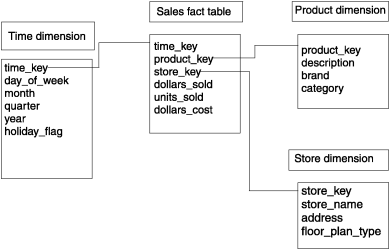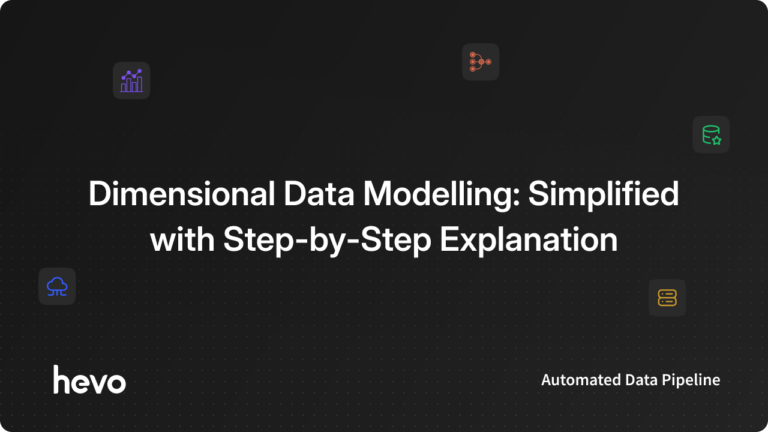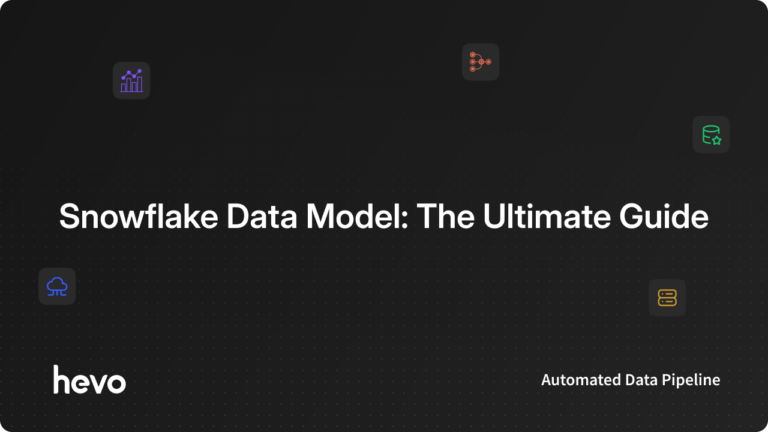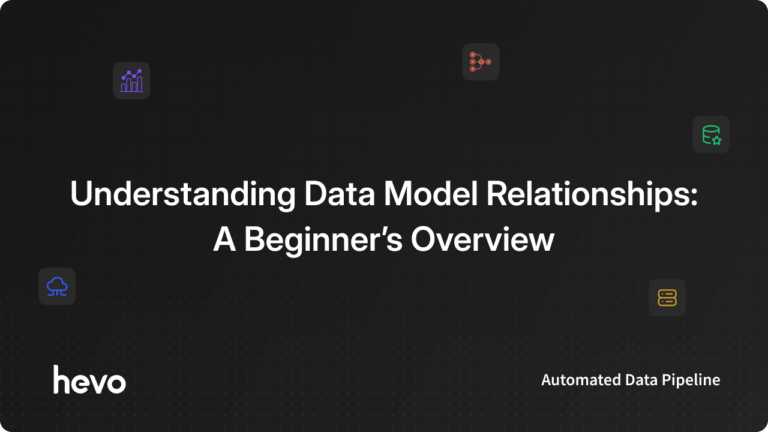In today’s world, data is a crucial part of any organization. Many companies transform the data through an ETL (Extract, Transform and Load) process and store this data in a Data Warehouse for further analysis. In order to access the data from this Data Warehouse, companies use a process called Dimensional Data Modelling.
Dimensional Data Modeling is a data structure that helps optimise a Data Warehouse to retrieve data quickly. Ralph Kimball developed this technique that could read, analyse and summarise data in a Data Warehouse for further analysis.
This article will introduce the concepts and features of Dimensional Modeling, the components that make up a Dimensional Data Model, the types & steps of Dimensional Data Modelling and also the benefits and limitations of Dimensional Modelling in Data Warehouse.
Table of Contents
What is Dimensional Data Modelling?
- Data Dimensional Modelling (DDM) is a technique that uses Dimensions and Facts to store the data in a Data Warehouse efficiently. It optimises the database for faster retrieval of the data.
- A Dimensional Data Model will have a specific structure and organize the data to generate reports that improve performance.
- It stores the data in the most optimized way to ensure there is no redundancy of the data and to improve performance. The Data Dimensional Model for an SQL Developer looks as follows.
For example, in an E-Commerce use case, Dimensions can be products, customers, order items, departments, categories, etc. At the same time, Facts can be ordered details that link to the dimensions via foreign keys.
As Dimensional Data Models deal with Dimensions and Fact tables, you’ll need to understand these tables in-depth. A Dimension Table usually contains the Dimensions of the business, and Facts are usually transactions. For example, in an E-Commerce use case, Dimensions can be products, customers, order items, departments, categories, etc. At the same time, Facts can be ordered details that link to the dimensions via foreign keys.
Implement effective data models to enhance your data consistency and integrity.
What does Hevo provide:
- Extremely intuitive user interface: The UI eliminates the need for technical resources to set up and manage your data Pipelines. Hevo’s design approach goes beyond data Pipelines.
- Data Transformation: Hevo provides a simple interface to perfect, modify, and enrich the data you want to transfer.
- Faster Insight Generation: Hevo offers near real-time data replication so you have access to real-time insight generation and faster decision making.
- Schema Management: Hevo can automatically detect the schema of the incoming data and map it to the destination schema.
- Scalable Infrastructure: Hevo has in-built integrations for 150+ data sources (with 60+ free sources) that can help you scale your data infrastructure as required.
- Live Support: Hevo team is available round the clock to extend exceptional support to its customers through chat, email, and support calls.
Key Features of Dimensional Data Modelling
Dimensional Modelling has gained popularity because of its unique way of analyzing data present in different Data Warehouses. The 3 main features of DDM are as follows:
- Easy to Understand: DDM helps developers create and design databases and Schemas easily interpreted by business users. The relationship between Dimensions and Facts are pretty simple to read and understand.
- Promote Data Quality: DDM schemas enforce data quality before loading into Facts and Dimensions. Dimension and Fact are tied up by foreign keys that act as a constraint for referential integrity check to prevent fraudulent data from being loaded onto Schemas.
- Optimise Performance: DDM breaks the data into Dimensions and Facts and links them with foreign keys, thereby reducing the data redundancy. The data is stored in the optimized form and hence occupies less storage and can be retrieved faster.
Components of Dimensional Data Modelling
There are 5 main components of any Dimensional Data Modelling. They are given below.
1) Dimension
Dimensions are the assortment of information that contain data around one or more business measurements. It may be topographical information, item data, contacts, and so on. Dimensions give the context to the Fact creation.
2) Facts
Facts are the collection of measurements, metrics, transactions, etc., from different business processes. It typically contains business transactions and measure values.
3) Attributes/Measures
Attributes are the elements of the Dimension Table. For example, in an account Dimension, the attributes can be:
- First Name
- Last Name
- Phone, etc.
4) Fact Tables
Fact tables are utilized to store measures or transactions in the business. For example, in Internet business, a Fact can store the requested amount of items. Fact Tables, as a rule, have huge rows and fewer columns. The Fact Tables are related to Dimension Tables with the keys known as foreign keys.
5) Dimension Tables
Dimension Tables store the Dimensions from the business and establish the context for the Facts. They contain descriptive data that is linked to the Fact Table. Dimension Tables are usually optimized tables and hence contain large columns and fewer rows. For example:
- Contact information can be viewed by name, address and phone dimension.
- Product information can be viewed by product-code, brand, color, etc.
- City, state, etc. can view store information.
Types of Dimensions in Dimensional Data Modelling
There are 9 types of Dimensions/metrics when dealing with Dimensional Data Modelling. They are given below:
- Conformed Dimension
- Outrigger Dimension
- Shrunken Dimension
- Role-Playing Dimension
- Dimension to Dimension Table
- Junk Dimension
- Degenerate Dimension
- Swappable Dimension
- Step Dimension
1) Conformed Dimension
A Conformed Dimension is a type of Dimension that has the same meaning to all the Facts it relates to. This type of Dimension allows both Dimensions and Facts to be categorised across the Data Warehouse.
2) Outrigger Dimension
An Outrigger Dimension is a type of Dimension that represents a connection between different Dimension Tables.
3) Shrunken Dimension
A Shrunken Dimension is a perfect subset of a more general data entity. In this Dimension, the attributes that are common to both the subset and the general set are represented in the same manner.
4) Role-Playing Dimension
A Role-Playing Dimension is a type of table that has multiple valid relationships between itself and various other tables. Common examples of Role-Playing Dimensions are time and customers. They can be utilised in areas where certain Facts do not share the same concepts.
5) Dimension to Dimension Table
This type of table is a table in the Star Schema of a Data Warehouse. In a Star Schema, one Fact Table is surrounded by multiple Dimension Tables. Each Dimension corresponds to a single Dimension Table.
6) Junk Dimension
A Junk Dimension is a type of Dimension that is used to combine 2 or more related low cardinality Facts into one Dimension. They are also used to reduce the Dimensions of Dimension Tables and the columns from Fact Tables.
7) Degenerate Dimension
A Degenerate Dimension is also known as a Fact Dimension. They are standard Dimensions that are built from the attribute columns of Fact Tables. Sometimes data are stored in Fact Tables to avoid duplication.
8) Swappable Dimension
A Swappable Dimension is a type of Dimension that has multiple similar versions of itself which can get swapped at query time. The structure of this Dimension is also different and it has fewer data when compared to the original Dimension. The input and output are also different for this Dimension.
9) Step Dimension
This is a type of Dimension that explains where a particular step fits into the process. Each step is assigned a step number and how many steps are required by that step to complete the process.
Also Read: Slowly Changing Dimensions
Steps to Carry Out Dimensional Data Modelling
Dimensional Data Modelling requires certain analysis on the data to understand data behaviour and domain. The main goal a Dimensional Data Model tries to address is that it tries to describe the Why, How, When, What, Who, Where of the business process in detail. The typical architecture of a DDM is shown below:

The major steps to start Dimensional Data Modelling are:
- Identify the Business Process
- Identify the Grain
- Identify the Dimensions
- Identify the Facts
- Build the Schema
1) Identify the Business Process
A Business Process is a very important aspect when dealing with Dimensional Data Modelling. The business process helps to identify what sort of Dimension and Facts are needed and maintain the quality of data. To describe business processes, you can use Business Process Modelling Notation (BPMN) or Unified Modelling Language (UML).
2) Identify Grain
Identification of Grain is the process of identifying how much normalisation (lowest level of information) can be achieved within the data. It is the stage to decide the incoming frequency of data (i.e.daily, weekly, monthly, yearly), how much data we want to store in the database (one day, one month, one year, ten years), and how much the storage will cost.
3) Identify the Dimensions
Dimensions are the key components in the Dimensional Data Modelling process. It contains detailed information about the objects like date, store, name, address, contacts, etc. For example, in an E-Commerce use case, a Dimension can be:
- Product
- Order Details
- Order Items
- Departments
- Customers (etc).
The Dimensional Model for a customer conducting an E-Commerce transaction is shown below:
4) Identify the Facts
Once the Dimensions are created, the measures/transactions are supposed to be linked with the associated Dimensions. The Fact Tables hold measures and are linked to Dimensions via foreign keys. Usually, Facts contain fewer columns and huge rows.
For example, in an E-Commerce use case, one of the Fact Tables can be of orders, which holds the products’ daily ordered quantity. Facts may contain more than one foreign key to build relationships with different Dimensions.
5) Build the Schema
The next step is to tie Dimensions and Facts into the Schema. Schemas are the table structure, and they align the tables within the database. There are 2 types of Schemas:
- Star Schema: The Star Schema is the Schema with the simplest structure. In a Star Schema, the Fact Table surrounds a series of Dimensions Tables. Each Dimension represents one Dimension Table. These Dimension Tables are not fully normalised. In this Schema, the Dimension Tables will contain a set of attributes that describes the Dimension. They also contain foreign keys that are joined with the Fact Table to obtain results.
- Snowflake Schema: A Snowflake Schema is the extension of a Star Schema, and includes more Dimensions. Unlike a Star Schema, the Dimensions are fully normalised and are split down into further tables. This Schema uses less disk space because they are already normalised. It is easy to add Dimensions to this Schema and the data redundancy is also less because of the intricate Schema design.
The Star Schema and Snowflake Schema are visually shown in the figures below:
The steps to design a Dimensional Data Model are given in a visual manner in the figure below:
Benefits of Dimensional Data Modelling
As now you understand the process of Dimensional Data Modelling, you can imagine why it is so important and how many benefits DDM provides for the company. Some of those benefits are given below:
- Improved Query Performance: The structured organization of data allows for faster query execution and improved analytical performance.
- Enhanced Data Analysis: Enables in-depth analysis of business trends, patterns, and anomalies.
- Improved Data Quality: Helps to ensure data consistency and accuracy by defining clear relationships between data elements.
- Enhanced Data Governance: Provides a clear and well-defined data structure, facilitating data management and governance.
Limitations of Dimensional Data Modelling
Although Dimensional Data Modelling is very crucial to any organisation, it has a few limitations that companies need to take care of when incorporating the concept into their applications. Some of those limitations are given below:
- Designing and creating Schemas require domain knowledge about the data.
- To maintain the integrity of Facts and Dimensions, loading the Data Warehouses with a record from various operational systems is complicated.
- It is severe to modify the Data Warehouse operations if the organisation adopts the Dimensional technique and changes the method in which they do business.
Despite these limitations, the DDM technique has proved to be one of the simplest and most efficient techniques to handle data in Data Warehouses to date.
Conclusion
- This article gave an in-depth knowledge about Dimensional Data Modelling, its types, features, components and also the steps required for any company to set up a DDM approach.
- It also gave a brief understanding of the benefits and limitations of the DDM approach.
- Overall, adopting any new approach can be a tedious task for any company, but, by having systematic techniques put in place the company can monitor those parameters carefully and also optimise the performance.
- If you are planning to help your company set up a DDM approach, then Hevo Data is the right choice for you! It will help simplify the ETL process and management process of both the data sources and the data destinations.
Sign up for a 14-day free trial and simplify your data integration process. Check out the pricing details to understand which plan fulfills all your business needs.
Frequently Asked Questions
1. What is dimensional data modeling?
Dimensional data modeling organizes data into fact and dimension tables to simplify analysis and reporting, making it easy to query large datasets.
2. How to build a dimensional data model?
Identify business processes, define fact tables (metrics or KPIs), create dimension tables (categories like time, product, etc.), and establish relationships between them.
3. Is dimensional modeling outdated?
No, dimensional modeling is still widely used for analytics because it’s efficient for querying, though modern data warehouses might combine it with other techniques for flexibility.







